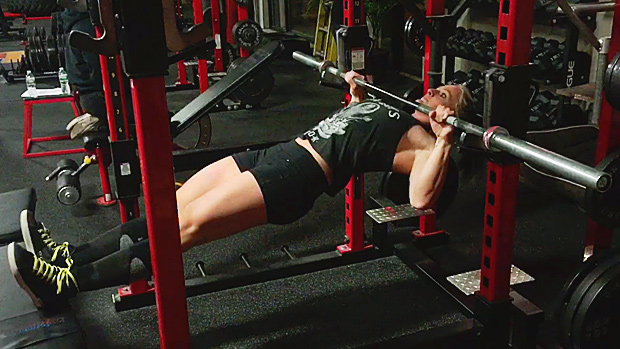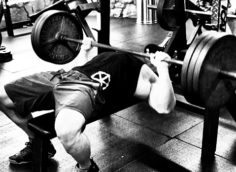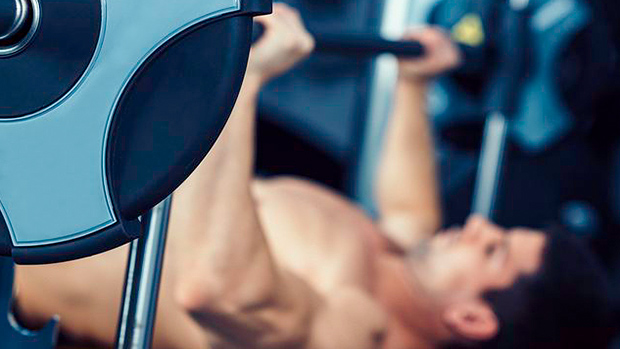Here's what you need to know...
- Circuit training will get fighters and combat athletes bigger, stronger, and leaner at the same time, but you must set it up correctly.
- The choice and sequencing of exercises, tempo, and rest intervals are the key parameters.
- Ballistic or power exercises aren't necessary or worth the risk.
Circuit training is the best method for getting lean and strong. With a well-designed circuit training workout, you can attain the Holy Grail of physique transformation – increased strength and muscle mass along with decreased body fat – simultaneously.
You may not be concerned with seeing your abs, but the benefits of losing fat go far beyond aesthetics. Low body fat levels are associated with higher VO2 max and decreased incidence of injury, as well as a greater strength-to-weight ratio, which is positively correlated to athletic success.
The key is combining correct exercise selection and execution.
It starts with using compound movements performed at a medium to slow tempo and arranged so that the most neurologically challenging movements come ahead of the less neurologically challenging ones (think squats before pull-ups).
This allows you to continue the circuit and maintain good technique while fatigue sets in. However, in the program below, I don't include the standard "power" movements like power cleans. Here's why:
- Power is a specific skill that must be practiced. There's no such thing as general power or general rate-of-force-development.
- Ballistic and power exercises (power cleans, snatches) have significant risk potential. Granted, all strength exercises are inherently risky, but my job as a strength coach is to maximize results while minimizing risk. An injured athlete can't improve. Ballistic training should be reserved for specific practice.
Program Details
The following program is designed for the mixed martial artist, wrestler, or any advanced athlete who wants to get bigger and stronger while improving conditioning.
Notes:
- Tempo describes the repetition speed. For example, a 30X1 tempo for the bench press would go like this:
- 3: second lowering to chest (negative portion of the exercise)
- 0: second pause on chest (or no pause)
- X: explode off the chest; push the bar as fast as possible (positive portion of exercise)
- 1: second pause before starting next repetition
- Week 1
- Monday: Workout 1
- Wednesday: Workout 2
- Friday: Workout 1
- Week 2
- Monday: Workout 2
- Wednesday: Workout 1
- Friday: Workout #2
- Week 3 Start back at week one.
Workout 1
| Exercise | Sets | Reps | Tempo | Rest | |
| A1 | Trap Bar or Deadlift | 3-4 | 6-8 | 31X1 | 10s |
| A2 | Chest Dip | 3-4 | AMRAP | 30X1 | 10s |
| A3 | Pull-Up, overhand mid grip | 3-4 | AMRAP | 21X0 | 90s |
| B1 | Drop Lunge | 2-3 | 6-8/leg | 20X1 | 10s |
| Stand on 3-4 inch high platform, step off into a lunge position and explode back to start. Rest 10 seconds between left and right legs. Start with your weaker side. | |||||
| B2 | One-Arm Dumbbell Row | 2-3 | 6-8/arm | 21X0 | 90s |
| C1 | Neck Extension | 3-4 | 10-12 | 1020 | 10s |
| C2 | Standing Dumbbell Shrug | 3-4 | 12-15 | 2010 | 60s |
AMRAP – As many reps as possible. If you can perform more than 20 reps, add resistance.
Rest 3 minutes between A and B circuits
Rest 2 minutes between B and C circuits
Workout 2
| Exercise | Sets | Reps | Tempo | Rest | |
| A1 | Squat with ankle extension | 3-4 | 6-8 | 30X0 | 10s |
| Perform a back squat. As you rise to the top, perform a calf raise and then lower into the next rep without rest. | |||||
| A2 | Low Incline Dumbbell Press | 3-4 | 6-8 | 21X1 | 10s |
| A3 | TRX Inverted Row, elbows out (use a weighted vest if 12 reps is too easy) | 3-4 | 8-12 | 2020 | 90s |
| B1 | EZ-Bar Reverse Curl | 2-3 | 6-8 | 21X0 | 10s |
| B2 | Supine Dumbbell Triceps Extension | 2-3 | 6-8 | 20X1 | 10s |
| Lower dumbbell to top of shoulders, elbows pointing towards ceiling. | |||||
| B3 | Chin-Up, palms up, close grip | 2-3 | AMRAP | 2010 | 10s |
| B4 | Push-Up, close grip | 2-3 | AMRAP | 2010 | 90s |
| Hands chest-width apart, push elbows out to side on the descent. | |||||
| C1 | Kettlebell Swing | 2-3 | 20-25 | 10X0 | 10s |
| C2 | Cable Pull-Through | 2-3 | 10-12 | 2020 | 60s |
| Face away from a low cable holding a rope attachment with feet wider than shoulder width and knees flexed. Hold the rope between the legs; pull and lower the weight with a rounded back. | |||||
What's Next?
After four short weeks you'll be stronger and in better shape, and provided you nailed the nutrition and supplement side of things, look a heck of a lot more muscular. At this point you should flip the script and switch to a more strength-based split program.
Bigger, leaner, and more dangerous in four weeks. You up for it?





